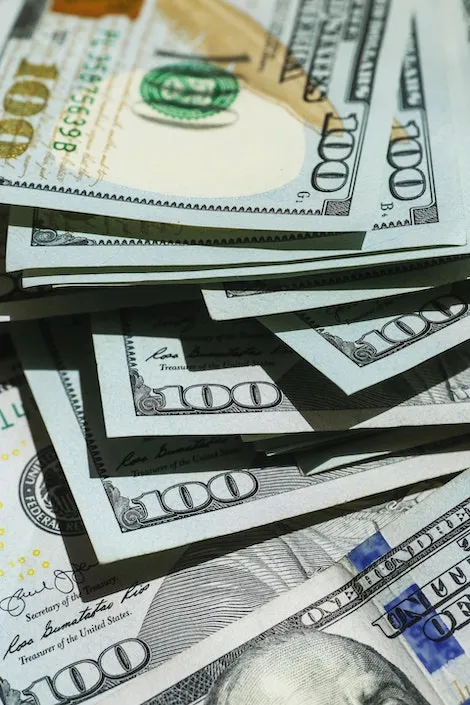
How Much Can You Make Writing Romance?
It’s unquestionable that romance books sell. At $1.44 billion in sales per year, romance is the best-selling genre, nearly double the next highest genre of crime/mystery at $728.2 million. It’s even seen an increase in sales during the pandemic as more readers are looking for a guaranteed happily ever after.
So how much do romance writers earn? The earnings of famous authors — like E L James, who made $95 million in one year alone during the height of Fifty Shades of Grey’s popularity, and Danielle Steel, whose net worth is estimated at $390 million in 2021 — make for eye-popping headlines.
But the average writer? Like writers of any genre: it depends.
How Much Can You Make Writing Romance?
In a recent survey, academic Christine Larson collected data from 4,270 romance writers, found through the Romance Writers of America. Each writer reported their income at two time points, 2009 and 2014. The median income reported was $5,828 in 2009 and increased to $10,100 in 2014.
By comparison, a cross-genre survey by the Authors Guild in the same time period found the opposite effect. Their authors reported a decline in income from $6,924 in 2009 to $3,750 in 2014. What’s with the difference? Well, Larson found that all income growth came from “‘hybrid’ authors,” or those who did both traditional and self-publishing.
Self-publishing has been an important area of growth for romance writers. A 2018 Authors Guild survey found that self-published authors across all genres were the only group to see an increase in income from 2013 to 2017. Looking specifically at self-published romance authors, their median income in 2017 was $10,050, which is almost five times higher than the next highest genre.
But let’s go back to the Larson survey for more interesting data. She also looked at a measure called the Virginia Woolf Index, named after Woolf’s declaration in A Room of One’s Own in 1929 that a woman must have a room of one’s own and 500 pounds a year if she is to write. Adjusting that figure to the present day, 500 pounds in 1929 is about $34,000 in 2016. That’s roughly equivalent to the U.S. median income for women of $39,621 in 2014. Of the romance writers surveyed, 31% exceeded this benchmark in 2014, up from 22% in 2009.
Setting our sights even higher at over $100,000 a year, 17% of romance writers surveyed in 2014 earned more than that. That’s almost double the rate found in 2009 at only 9%.
The percentage of romance writers who were able to make writing romance their full-time job also grew in this time period, rising from 39% in 2009 to 45% in 2014. Comparing it to the Authors Guild survey again, authors across all genres saw no change over the same period. So for romance writers, a modestly paid, full-time writing gig is more doable now in the digital age than for writers of other genres, Larson concludes.
For a more personal look at the topic, I spoke with three authors about how much they’ve earned from writing romance. But first, a quick rundown of how income and expenses might differ for traditionally published versus self-published romance authors.

Traditional Publishing vs. Self-Publishing: Income, Expenses, and Access
For traditionally published romance authors (that is, authors who are working with a publishing company, which can range anywhere from the Big 5 to a small, independent publisher), their main source of income would be a book advance and royalties. (For an explanation of what exactly that means, check out Sarah Nicolas’s excellent piece on how much authors make per book.) The exact dollar amount of an advance can vary significantly.
Author Brenda Hiatt kept a survey of advances for romance books from traditional publishers through 2015. Looking at just the three most commonly reported publishers, the average advance for a first book ranged from $3,200 (Kensington/Zebra) to $7,250 (Grand Central Publishing) to $9,250 (Berkley/Jove). Advances for subsequent books from the same three publishers were $10,200 (Kensington/Zebra), $19,400 (Berkley/Jove), or $17,500 (Grand Central) on average.
A traditionally published romance author could then go on to earn royalties on their book if or when their share of sales from the book surpasses the amount of the original advance. Some never get to this point. For those who do, their royalties, usually paid as a percentage of the sales amount, are typically around 6–10% for print sales and 20–25% for electronic sales, according to the Hiatt survey.
Someone not familiar with the inner workings of publishing might hear those percentages and think, “Six to ten percent? That’s not much!” And it’s not. Royalties of 10% on a hardcover book that costs a reader $35 would earn the writer only $3.50. So while there is another conversation we could have about author royalties versus publisher profits, one reason why the author receives only a small percentage of the book’s sales is the costs of publishing. A traditional publishing company typically covers the expenses of production, from editing, cover design and printing, to distribution and promotion.
So when it comes to self-publishing, the royalties may be much, much higher — but so can the potential expenses. One of the most common avenues for self-publishing is Amazon with their Kindle Direct Publishing platform. They pay writers 35–70% royalties on ebooks and 40–60% (less printing costs) on print books. Self-published authors receive no advance, though. They’re also on the hook for arranging and paying for those things a publisher would normally cover. This can include the many rounds of editing a book goes through (from developing the plot and characters to ensuring proper grammar and punctuation to checking for typos), designing a book cover (which some authors do themselves using stock photos and an editing program, while others commission artwork), and marketing. While these expenses are technically optional, many full-time writers say they’re necessary to help their books stand out and do well among a sea of self-published works.
Beyond the straightforward differences in dollars and cents, though, another key difference between traditional and self-publishing is the level of gatekeeping. Not just anyone can land a publishing deal. And although many might want to believe publishing is purely a meritocracy, no institution in our society is free of structural bias and discrimination.
Just one illustration of this is the viral hashtag #PublishingPaidMe, created by author L.L. McKinney to highlight the disparity in the advances given to Black authors compared to their white counterparts. And as romance author Farah Heron pointed out when discussing the hashtag, pay is not the only issue: “most authors of colour don’t get book deals at all.” Heron also cited The Ripped Bodice report, an annual report by the Los Angeles bookstore on the state of racial diversity in romance publishing.
According to their 2020 diversity report, while this past year has brought a lot of statements about antiracism and dismantling white supremacy in publishing, there’s a noted discrepancy in who’s getting published and paid by them. In 2020, only five romance publishers or imprints had at least 15% of the books they published in 2020 written by BIPOC authors. Ten of the 16 surveyed had under 10% of their books by BIPOC authors. The Ripped Bodice reports, “For every 100 books published by the leading romance publishers in 2020, 12 were written by BIPOC.”
Combined with the gender bias so often seen in romance, it’s not a huge surprise that self-publishing can be a source of autonomy. But how is it as a source of money? For a closer look beyond the surveys, I spoke with three romance authors on how much they’ve earned in their careers so far.

An Inside Look at How Much Romance Authors Make
The first author I spoke with was Linda*, a self-published author of 15 books that include paranormal romance and urban fantasy novels. “In my first year of self-publishing I earned about $100,000 on three books,” she said. “That figure went up a bit over the next two years, then almost quadrupled in 2020. This year it will probably be at half of what it was last year.”
Working full-time on her writing, her income is about 20% direct sales and 80% payouts from subscriptions services like Kindle Unlimited and Audible. In Kindle Unlimited, readers pay a monthly fee to Amazon and can read as many books that are part of the program as they like. With how voracious romance readers can be — Scribd infamously downgraded its unlimited reading program because romance readers were churning through books at an unexpected rate — enrollment in Kindle Unlimited can be a big source of revenue for authors.
While her income has been impressive, Linda adds, “I have to pay for everything that a publishing company would — all levels of editing (developmental, copy, proofreaders), cover design, and marketing, which is by far the largest expense. I put about 40% of my revenue back into marketing.”
Next, I spoke with Jackie Lau, who has published over ten books with a mix of traditional and self-publishing. “Prior to 2018, I wrote under a different pen name and sold books to a number of small presses. I made very little, no more than $200 USD I think, per year from royalties 2014–2017, and I still have some royalty income (about $100 USD/year) from those books,” she said.
In 2018, she made the switch to self-publishing. “When I started self-publishing under this name, my revenue increased significantly,” she said. “In 2018–2019, I published 10 books (category length novels and novellas) and made about $19,000 CDN in revenue, but it mostly went to expenses.” Her expenses, which were over $8,000 CDN in 2020, included editing (her biggest expense), cover art, and trade association membership dues, among others.
“I didn’t really start to see an income from self-publishing until 2020, once I had a decent-sized backlist,” Lau said. In 2020, she also signed a deal with the Penguin Random House imprint Berkley Books for Donut Fall in Love, due out in October 2021, and received a small part of her advance. “[But] the majority of my revenue was from self-publishing,” she said. That portion has decreased somewhat in 2021 as she’s received more of her advance and additional income from selling the audio rights to some of her self-published books.
“Overall, I’ve made less than $50,000 CDN from romance writing so far, once expenses are subtracted,” Lau said. While writing is her full-time job, she adds, “In 2020, I made about minimum wage (where I live) at 30 hours a week from writing. 2021 will be better.”
Last, I talked to Kathryn Moon, author of over 20 self-published romance books. “It’s been a bit of a roller coaster,” she said. “I started by publishing in the reverse harem romance genre when it was still fairly new and booming in 2018. My first two months were over $4,000 each with one novel and one novella available.” But less aware of how to maintain a readership and with the genre filling up, her income had slowed down to less than $1,000 a month by the next year.
“I felt like I’d absolutely failed as an author and that readers had lost interest in my work,” she said. “I did a little comfort writing for myself next, deciding to just write what I wanted most to read, not expecting any interest.” That ended up becoming Baby & the Late-Night Howlers, the first book in her Sweet Omegaverse series, which steadily gained interest. “When I released the second story in that Sweetverse series six months later I had my first five-figure month.”
Now in her third year of publishing, “it’s been fairly steady, with a lot of added help from the TikTok BookTok community,” she said. 2021 will be her first six-figure year. Her primary sources of income are direct ebook sales on Amazon, Kindle Unlimited earnings, and paperback sales.
Like the other authors I spoke to, covers and editing are two of her main expenses, but her largest expense is audiobook production, which is about $3,000 per book. “At the moment, I’m very lucky to not have to spend anything on ads, but I’m prepared for that to change at some point,” she added.
Moon is also now working full-time as a romance author, after taking the leap when her previous employer, a local yarn store, closed. “I am extremely grateful to be in a position to comfortably live off my writing income at the moment and hopeful that I can continue to maintain this success, but I’m always aware that the market of writing is a changing tide for any of us,” she said. “I’m learning to surf!”
* indicates a name changed to maintain privacy. Authors who are named are done so with the author’s consent. A huge thank you to the authors who agreed to speak with me! Money is usually seen as such a private topic, so I really appreciate your honesty and transparency.









